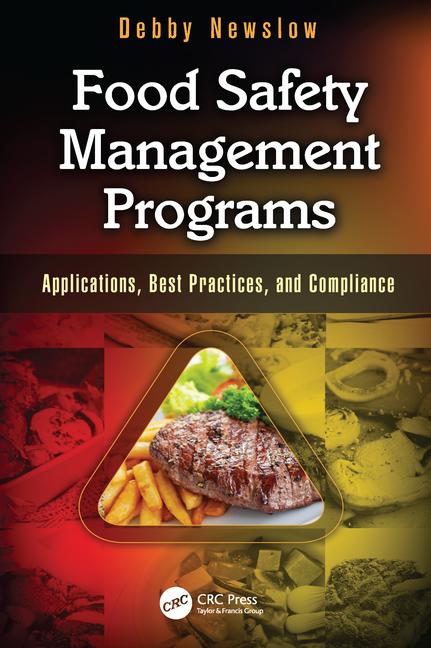FDA Seeks Industry Input on How to Facilitate Consumer Notification of Adulterated Foods

The Food Safety Modernization Act (FSMA) is designed to shift the food safety paradigm from reacting to food safety problems after they occur to preventing them from occurring in the first place. Nevertheless, even with the implementation of thoughtful, sophisticated food safety prevention plans, it is inevitable that some food products that may cause foodborne illness will evade preventative protocols and enter the stream of commerce. A review of the U.S. Food and Drug Administration’s (FDA) website dedicated to food recalls proves that observation correct. In the past month alone, FDA has posted on its website notices for more than 14 food products that were recalled stemming from concerns about Salmonella and Listeria contamination, among other potential food safety-related harms.
FSMA requires changes to the Reportable Food Registry (RFR) that may transform the RFR into one of the first lines of consumer protection where a food product that may cause serious harm to consumers has reached the marketplace. As originally envisioned, the RFR was designed to identify and track unsafe foods within the food supply chain. Now, with the amendments required by FSMA, the RFR’s goal, in addition to tracking unsafe food within the supply chain, is to:
• Provide consumers with critical information about potentially contaminated foods in an effort to identify those products before consumption
• Notify consumers that they may have been exposed to an adulterated food
Given the speed with which a company must act where events trigger application of the RFR—within 24 hours of determining that it is a responsible party for a reportable food product—it is prudent for companies to prepare for notifying FDA of a reportable event by drafting and practicing a plan that sets forth detailed protocols the company will follow in case one of its food products triggers the obligation to file a report with the RFR.
But questions remain what precisely should be reported in order to make the RFR effective in protecting consumers? FDA wants your input. To that end, it has extended until August 18, 2014, the period for submitting comments on the proposed rulemaking entitled “Implementation of the Food and Drug Administration Food Safety Modernization Act (FSMA) Amendments to the Reportable Food Registry (RFR) Provisions of the Federal Food, Drug and Cosmetic Act.”
The RFR has been in effect since 2009, pre-dating FSMA. A responsible party must submit a report to FDA through the RFR electronic portal within 24 hours of learning that there is a reasonable probability that the use of, or exposure to, an article of food will cause serious adverse health consequences or death to humans or animals (i.e., a similar standard for a Class I recall). That obligation is not limited to the manufacturer of the reportable food product. Rather, for purposes of the RFR, a “responsible person” is any food facility that must register with FDA that manufactures, processes, packs or holds food. The failure by a responsible party to report a reportable food even can result in criminal liability.
Among other obligations in addition to promptly reporting a reportable food, a responsible party must:
• Submit certain information regarding the reportable food, including the date on which the responsible party determined that the food should be reported, a description of the food and its quantity, and the nature and extent of its adulteration
• Investigate the root cause of the adulteration if the reportable food originated with the responsible party and report the findings when determined
• Maintain for at least 2 years records that relate to each report submitted to the RFR and allow FDA to inspect those records
• Provide notification to immediate suppliers and immediate customers of the reportable food
FDA encourages companies to engage in self-help in an effort to avoid report obligations. That is, a responsible party is not required to submit a reportable food report where:
• The adulteration originates with the responsible party
• The responsible party detects the adulteration prior to transfer of the food product to another party
• The responsible party corrects the adulteration or destroys the product
As indicated, FSMA mandates changes to the RFR that make it a more important tool to protect consumers. Under FSMA, FDA:
• May require a responsible party to submit “consumer-oriented information regarding a reportable food,” including a description of the food and the product identification codes for that product, contact information for the responsible party and other information that FDA determines is necessary to enable a consumer to identify whether she has the reportable food in her possession
• Must publish on its website a one-page summary of the consumer-oriented information that can be printed off for purposes of notifying consumers
Further, FSMA requires that within 24 hours of FDA’s publication of the one-page reportable food summary, a grocery store that sold the reportable food and that is part of a 15-or-more unit chain display the summary in a conspicuous location and manner for at least 14 days.
In its effort to better protect consumers, FDA seeks comment on several issues with respect to the FSMA-required amendments to the RFR, including:
• The scope of consumer-oriented information that is needed from a responsible party to facilitate consumer determination whether a reportable food is in the consumers’ possession
• Consumer preferences for receiving RFR information
• The types of stores that should be considered “grocery stores” for purposes of the RFR
• How grocery stores should be made aware of summaries that the FDA has posted on its website
• How grocery stores display summary notices
Food companies continue to have important opportunities to shape the very rules that will govern their operations, impact their success and, should their preventative plans fail, help them protect their consumers and, concomitantly, their brands. Information on the RFR, the FSMA- required amendments to the RFR, and the additional types of information sought by FDA in conjunction with enhancing the RFR can be found on FDA’s website.
John T. Shapiro is partner and member of the Food Industry Team at Freeborn & Peters LLP (Chicago).
>
Looking for a reprint of this article?
From high-res PDFs to custom plaques, order your copy today!






